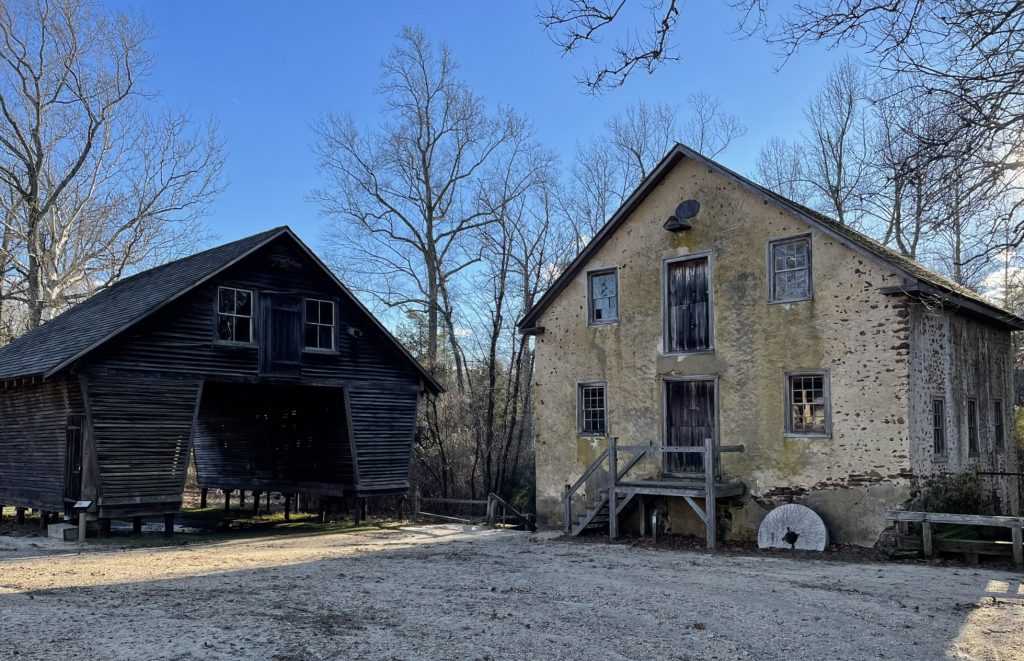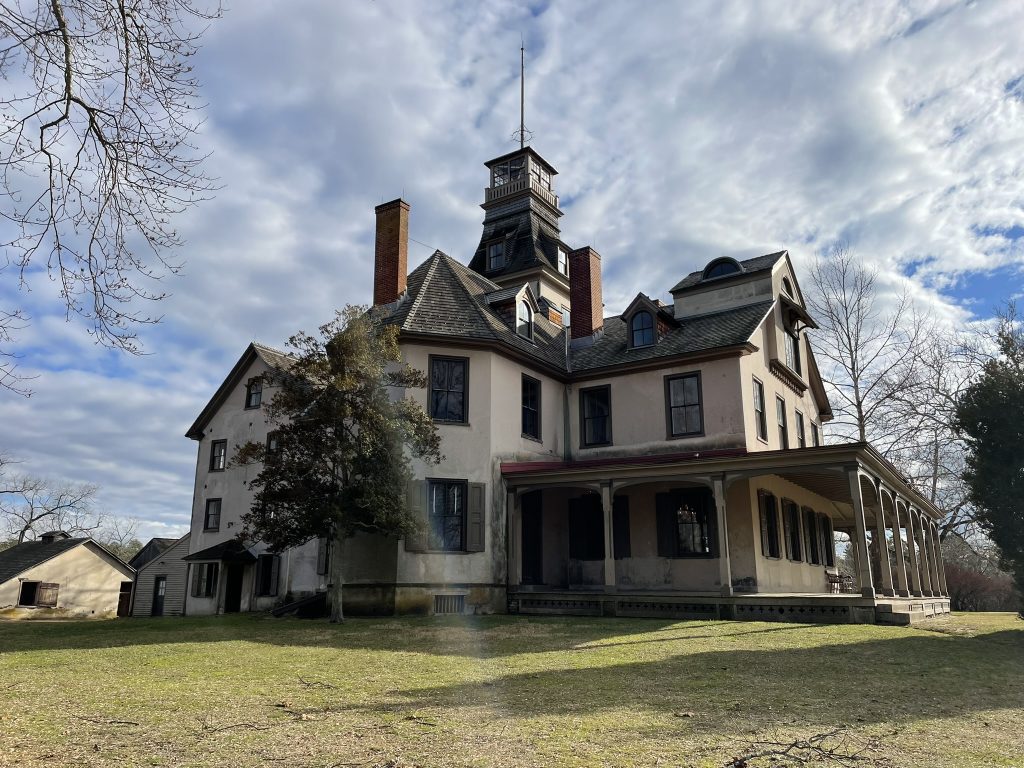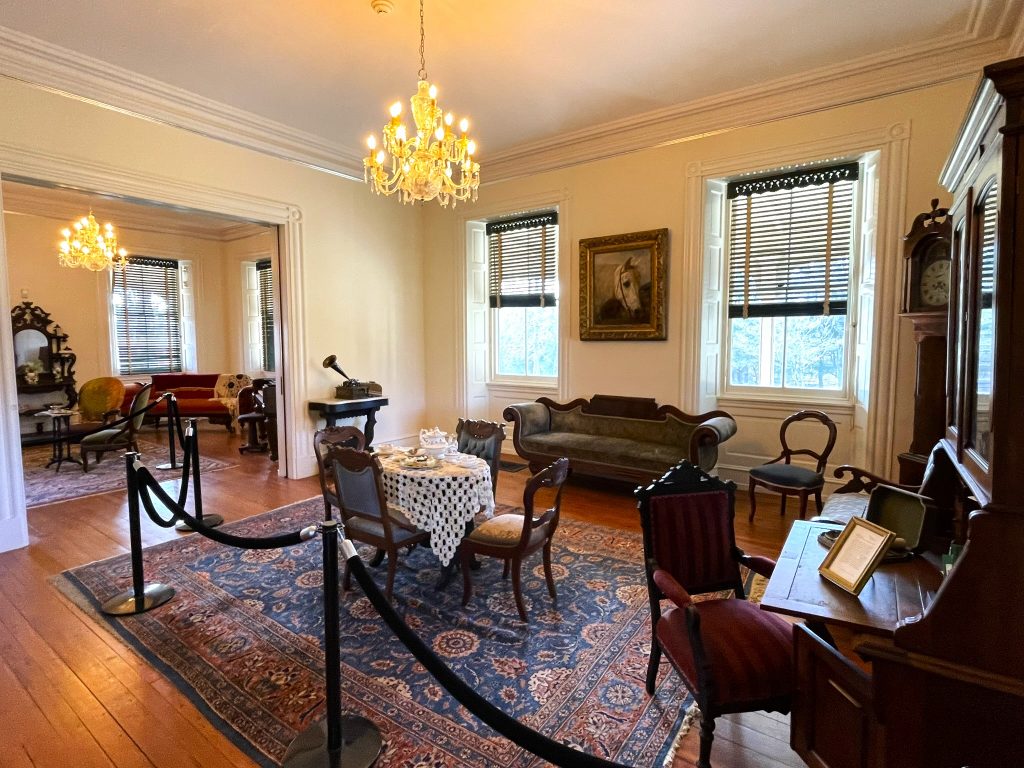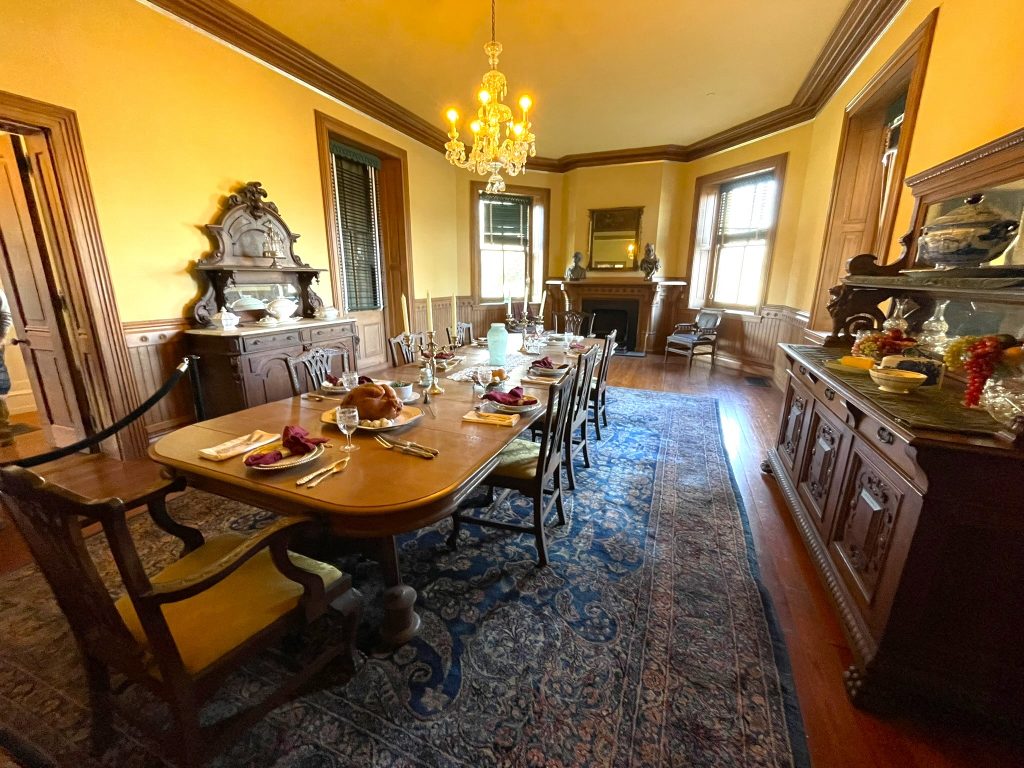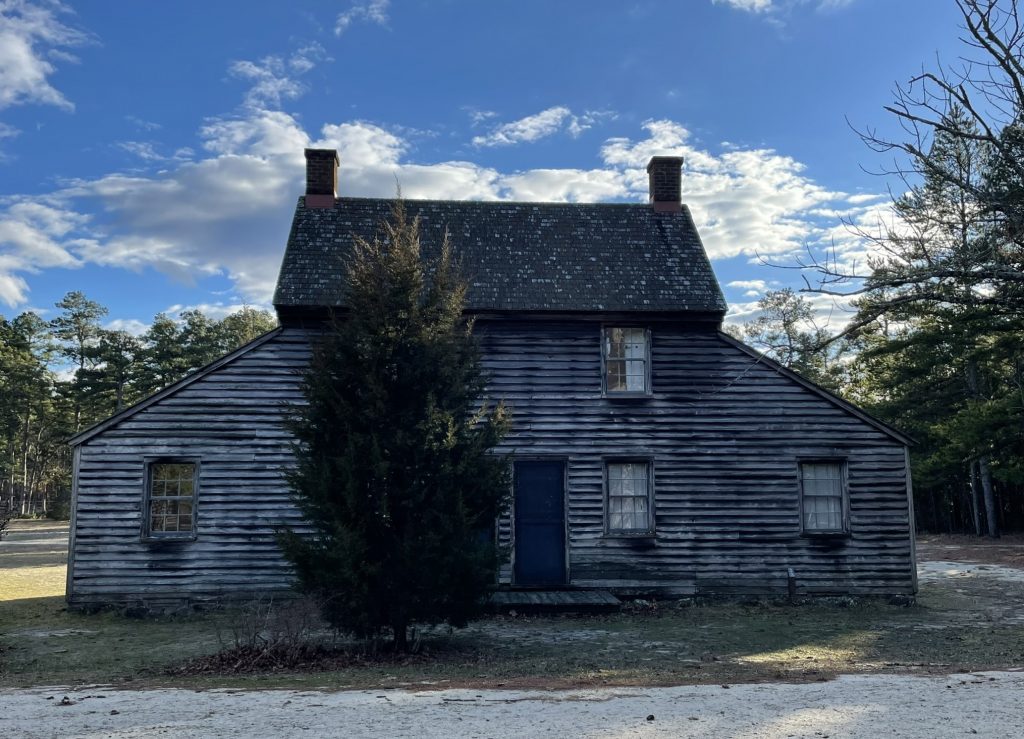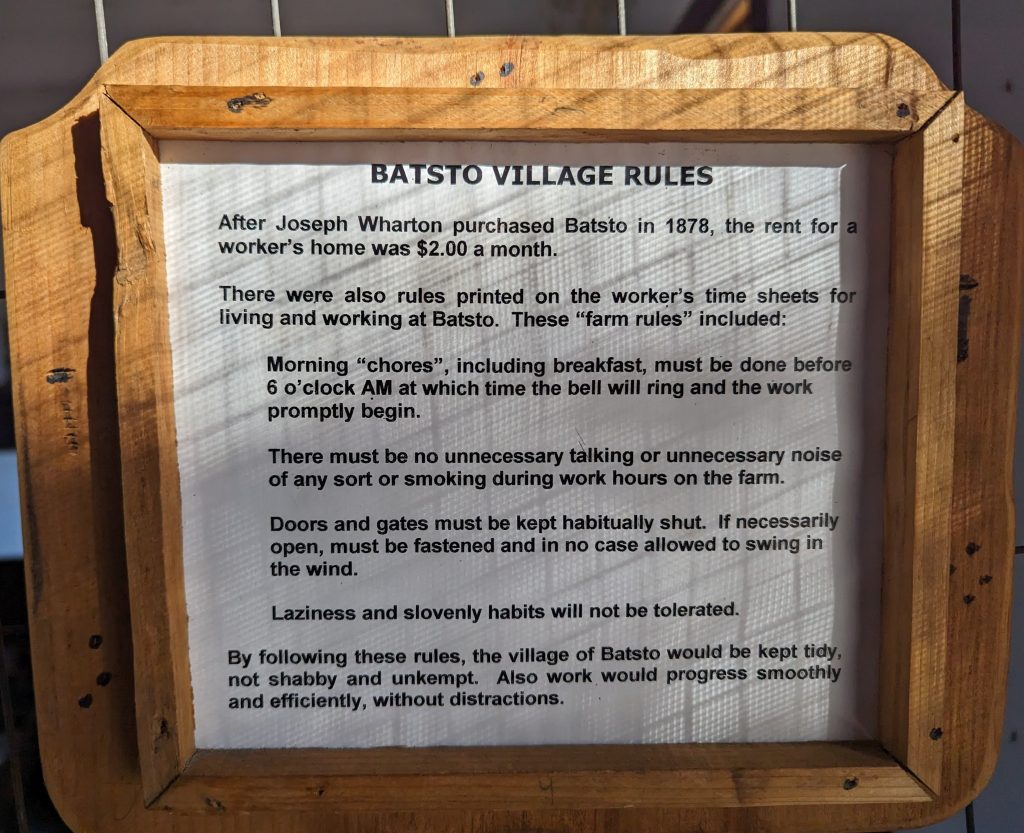Batsto Village in Hammonton is located in Wharton State Forest, which is part of the vast Pine Barrens of southern New Jersey. We find the 1.1 million acres of the Pine Barrens to hold endless fascination, full of ghost towns and remnants of activity from the days of yore. Many places require a four-wheel drive vehicle and some sleuthing skills, but Batsto Village isn’t one of them.
In 1766 Charles Read built the Batsto Iron Works along the river, which held an abundance of bog ore. The works produced cooking pots and kettles, and supplies to support the war effort during the American Revolution.
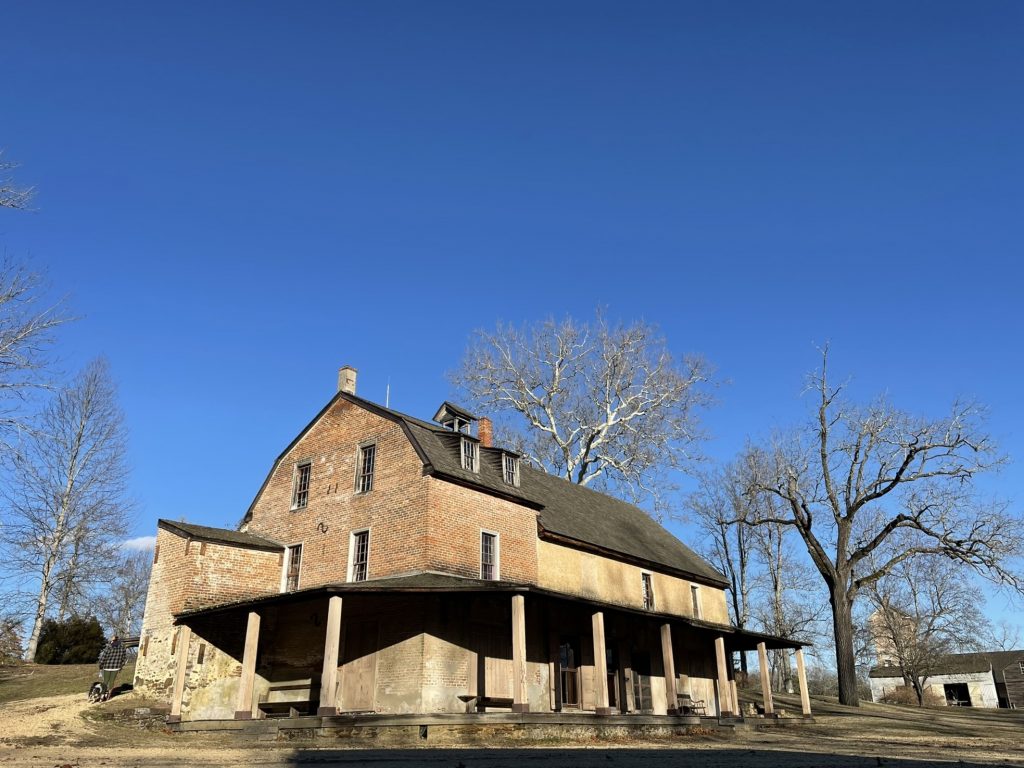
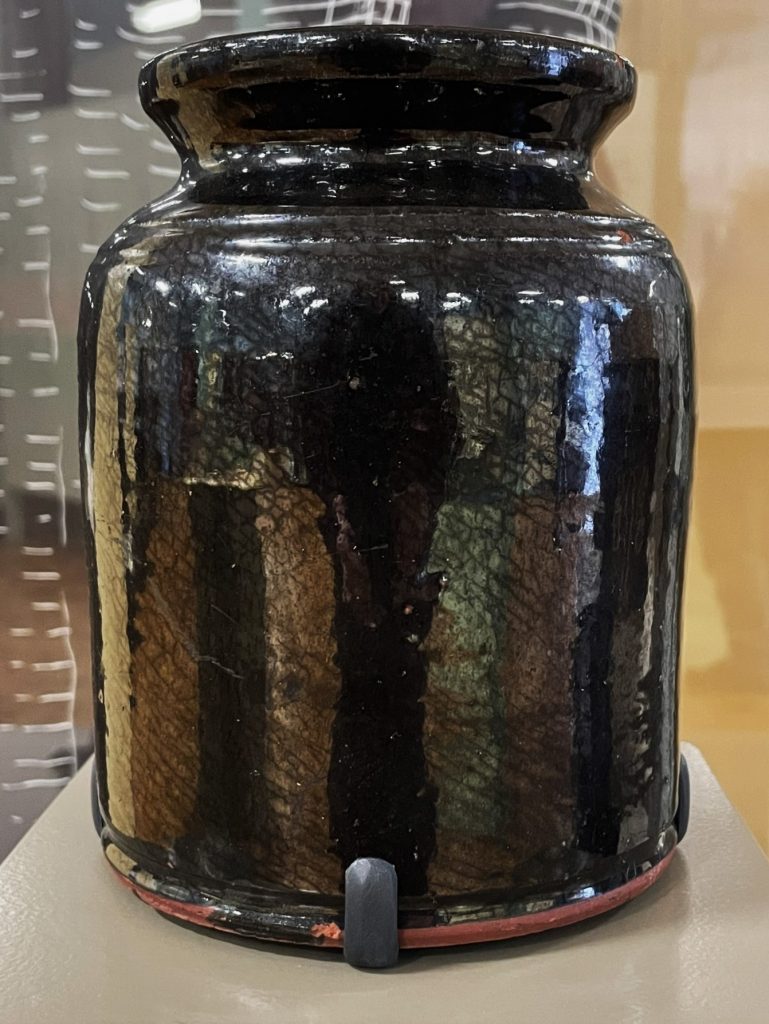
The iron works changed hands several times, but the Richards family acquired a controlling interest in 1784, going on to build and operate most of the structures in the village over the next 91 years.
At its peak in the mid-1800s, there were 65 houses for furnace workers, with a total of 374 residents. An 1874 fire destroyed all but 18 of these homes (such as the ones in the cover photo).
When the demand for iron declined in the mid-19th century, Batsto remade itself as a renowned maker of window glass for a few decades, but alas, that, too, did not last.
When Batsto found itself in bankruptcy in 1876, Joseph Wharton, a Philadelphia businessman, stepped in. He purchased Batsto along with other nearby properties, and eventual owned 150 square miles of adjoining properties.
Chances are good that you have heard of this Joseph Wharton. Sometimes described as a “gentleman farmer,” Wharton was deeply involved in mining, railroads, and manufacturing in the mid- and late 1800s. He was colleagues with Thomas Edison, Andrew Carnegie, and Cornelius Vanderbilt, and was one of the wealthiest men of his day. Later he would found the Wharton School at the University of Pennsylvania, co-found the Bethlehem Steel company, and be one of a group of Quakers to create Swarthmore College.
Wharton had many business interests across the country, in Pennsylvania, West Virginia, Michigan, Arizona, and Nevada, as well as in New Jersey, and did try his hand at cranberry farming and running a sawmill on the site.
But his real goal in purchasing the properties was to exploit the enormous aquifer underneath the property and throughout central New Jersey. He intended to build the massive infrastructure needed to export clean drinking water to Philadelphia, then in the midst of a water crisis due to the heavily pollution levels in the Delaware and Schuylkill Rivers. Once New Jersey officials caught wind of this plan, however, they passed legislation prohibiting the export of water from the state!
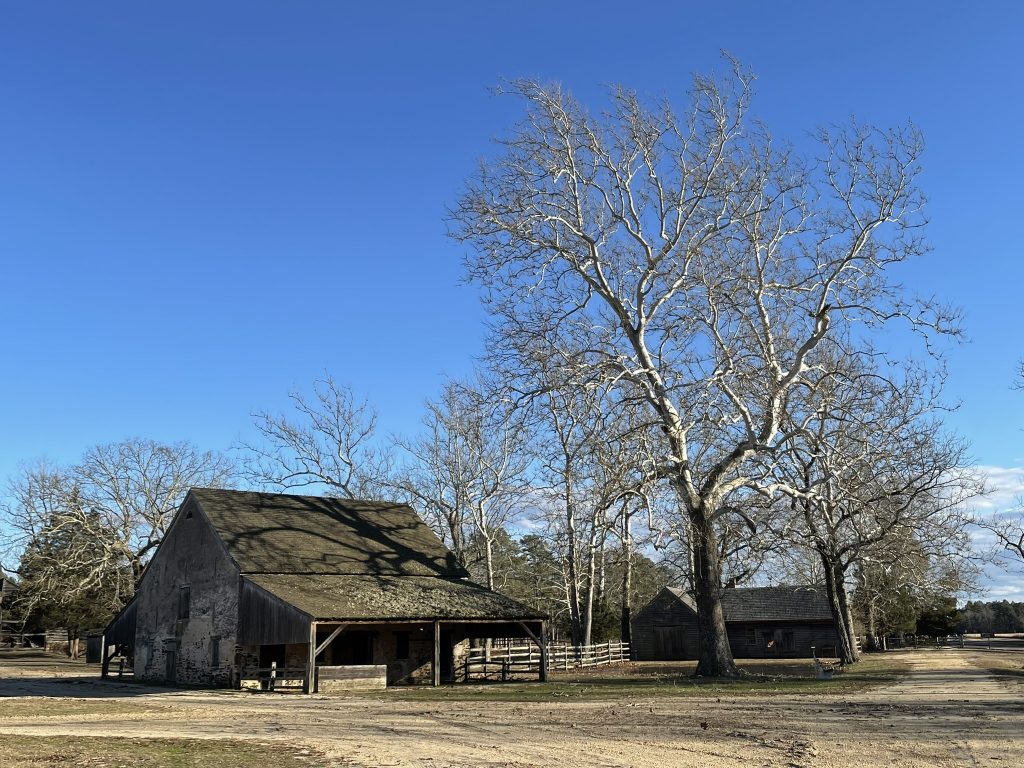
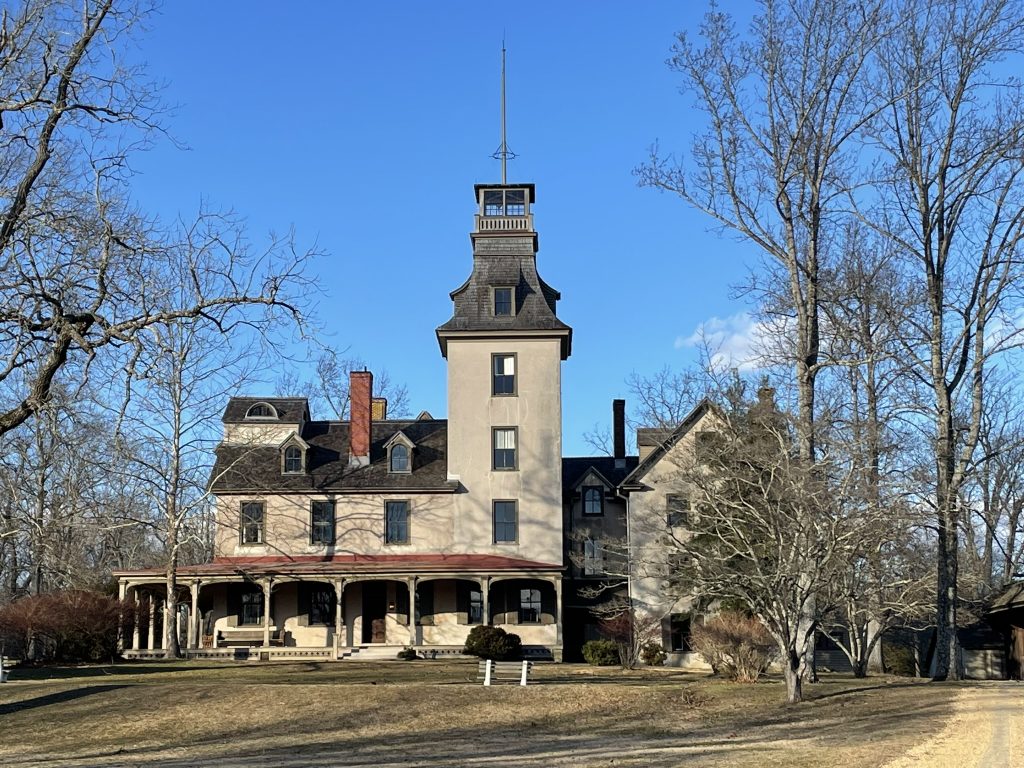
Operations at Batsto continued past Wharton’s death in 1909, with workers living on site in a village of homes. As operations were winding down in the 1930s, workers were guaranteed the right to live in their homes as long as they lived, but could not pass down their life interest to their heirs. The last inhabitant vacated the property in 1989!
In the 1950s, the site was considered by the U.S. Air Force for a depot and air transport hub, but the State of New Jersey purchased the site in 1958 after those plans were abandoned. They restored the mansion and rebuilt the dam, opening the property up for visitors.
Along with the houses still on the site, there are numerous other buildings, including the sawmill, blacksmith, general store, and along other buildings typical of sites like these. A couple of the workers’ houses are open for visitors.
The 32-room mansion is a central feature, the core of which dates to the late 1700s. Additions were made in 1815 and in the 1830s, with significant alterations made by Wharton in the 1870s and 1880s, who renovated it in the Italianate style and included many modern conveniences such as central heating, indoor bathrooms, and hot and cold running water.
